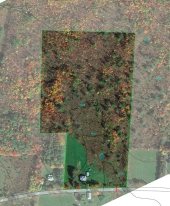
















daniel smith wrote:Christopher, Thank you so much for your thorough response!
I just determined the steepness of the slope using http://www.mytopo.com/search.cfm?type=pns
(A really awesome tool that overlays topographic maps over google maps)
I've determined that the overall slope is 14% gradient, or a gain in 1 foot of elevation every 4 feet.
daniel smith wrote:This is the overall slope, however. In reality, the slope that is closer to the house is probably about 10%, whereas the slope farthest from the house is probably about 20% (the house is at the downhill most part of the property)
I have found a geologic report of Scotts Valley online. I have a difficult time ascertaining anything significant from the report, however, it does mention that the location is marked by "moderate to high landslide risk"
(if you feel so inclined, you can read the report [url=https://docs.google.com/viewer?)
daniel smith wrote:Now, if I understand you correctly, you are suggesting that the best strategy is to create swales on contour that have hard even edges all the way along, to prevent erosion and promote sheet flow is that correct?
If this is incorrect, please let me know what I am missing. If this is correct, could you point me in the right direction as to where I can learn to do this effectively?
Thanks again, your input is greatly appreciated!








daniel smith wrote:The first strategy is to create a segmented series of separate relatively shallow swales, that are about 8' in length, with a wooden board that is essentially on contour to retain the edge?
daniel smith wrote:The second strategy is to create a serpentine swale (again, relatively shallow) running down the slope with wooden boards along the edge. Are you also suggesting that I create intentional "erosion proof" spill zones that are reinforced with wooden boards and stones? (i cant fully visualize the specifics of your description here)
daniel smith wrote:I'm curious to understand how the hard edge works with a berm.... I had planned on having berms on the downhill side of my swales. In order to do this would the boards have to reach up to the peak of the berms (placed between the swale and the berm)?

|
A lot of people cry when they cut onions. The trick is not to form an emotional bond. This tiny ad told me:
The new kickstarter is now live!
https://www.kickstarter.com/projects/paulwheaton/garden-cards
|




